An interview with CEO of Lewa Wildlife Conservancy, Mike Watson.

Black rhinoceros in Lewa Wildlife Conservancy (LWC). Photo courtesy of LWC.
So far this year, South Africa has lost 430 rhinos to poachers, more than one animal a day. The epidemic of rhino poaching, fueled by demand for black-market powdered rhino horn in Vietnam and China, is decimating rhino species worldwide. In fact, last year saw the official extinction of two rhino subspecies: the Vietnamese rhino (Rhinoceros sondaicus annamiticus), a subspecies of the Javan, and the western black rhino (Diceros bicornis longipes), a subspecies of the black. However there is one place where rhinos still thrive. The Lewa Wildlife Conservancy in Kenya has found itself with a unique, but happy, problem: they have so many black rhinos, which are considered Critically Endangered by the IUNC Red List, that they need to move some to stop rhino-fights. In other words, their rhino population has hit its limit for the 25,000 hectare (62,000 acre) nonprofit protected area.
“Since 2000, Lewa’s black rhino population growth rate has averaged 10 percent, higher than the national target of 6 percent,” the CEO of Lewa Wildlife Conservancy, Mike Watson, told mongabay.com in a recent interview. “However, we are beginning to see signs that the Conservancy has reached its ecological carrying capacity of rhinos. Incidences of fighting between the male rhino for females and terrain are increasing, and younger males are attempting to knock down the perimeter fence lines in hopes of finding their own territory.”
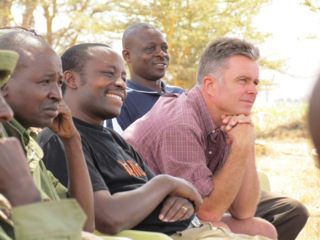 Mike Watson, far right. Photo courtesy of LWC. |
Lewa has a long history of rhino conservation, it started out as a black rhino sanctuary in the early 1980s at the height of last poaching epidemic. Currently the reserve has 74 black rhinos (Diceros bicornis), over 10 percent of Kenya’s total population, and 56 white rhinos (Ceratotherium simum). Amazingly, only five rhinos have been poached in Lewa since its inception around 30 years ago.
So, what is Lewa doing right? Here’s Watson: “The most important factor is to have a highly organized, professional and committed security force, Lewa’s team protects over 60,000 acres, divided into 18 patrol blocks that are monitored 24 hours a day, 365 days a year. We ensure that each rhino on the conservancy is seen by one of our rangers at least every two days. If they aren’t seen after four days, we begin an aerial search of the conservancy that doesn’t end until we’ve found them.”
Watson also says that involving local communities in conservation efforts, keeping well-trained tracking dogs, having a close relationship with the Kenyan government, and constantly updating training for rangers are key to the reserve’s anti-poaching successes
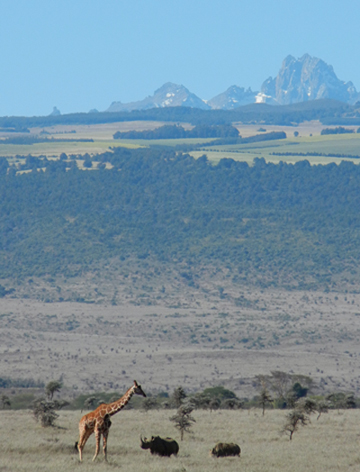 Mount Kenya viewed from Lewa. Photo courtesy of LWC. |
“My advice to other conservancies is that this level of security is difficult to maintain and extremely expensive; however it is the only way to safeguard these animals at this time when wildlife products, particularly rhino horn, are so highly sought-after on the black market,” he says.
To deal with their happy rhino problem, Lewa now plans to translocate around 20 rhinos to other protected areas if they can secure the funding.
Lewa is also home to more endangered African mammals than rhinos, including three important antelope species: the sitatunga (Tragelaphus spekii), a rare species in Kenya; the beisa oryx (Oryx beisa), considered Near Threatened; and the gerenuk (Litocranius walleri), also considered Near Threatened. In addition, Lewa houses nearly 20 percent of the world’s Grevy’s zebra (Equus grevyi) population, which is listed as Endangered.
“The Grevy’s zebra has suffered one of the most devastating population reductions of any African mammal,” Watson explains. “Historically found in Eritrea, Ethiopia, Somalia and Kenya, Grevy’s zebras are now restricted to northern Kenya and Ethiopia. While less than 30 years ago they numbered approximately 15,000, as of today approximately 2,000 remain.”
Lewa has already moved Grevy’s zebras to three other protected areas in order to help the species stabilize and hopefully increase.
“It is Lewa’s mission to serve as a catalyst for conservation,” Watson explains. “We pioneered the community conservation model in Kenya and have achieved amazing success in wildlife management. Now, the future of Lewa lies in looking beyond our boundaries and serving as the foundation to the community-based conservation development being spearheaded across northern Kenya by our sister organization the Northern Rangelands Trust (NRT).”
INTERVIEW WITH MIKE WATSON, HEAD OF LEWA WILDLIFE CONSERVANCY

African savanna elephant in the LWC. Photo courtesy of LWC.
Mongabay: Lewa began as a rhino sanctuary in the 1980s. What drove its creation?
Mike Watson: Before the founding of the rhino sanctuary, most of the land that makes up the Lewa Wildlife Conservancy was used as a cattle ranch and one small safari lodge, both run by the Craig family who still live on Lewa today. In the early 1980s the Craig family was approached by a woman named Anna Merz who was desperately concerned about the future of the black rhino species. At this point in time both black and white rhinos were on the brink of extinction internationally because of poaching. Between the 1970s and 80s the number of black rhinos in Kenya dropped from approximately 20,000 to only 300 animals.
The Craig family, who already had a deep commitment to wildlife conservation, began working with Anna and set aside 5,000 acres of their ranch for rhino protection and breeding in hopes of building up the population numbers. They received permission from the Kenyan government and collected all of the rhinos they could find still living in the wild in northern Kenya and formed security and wildlife supervision teams to manage their protection. Not only was the breeding program and conservation extremely successful, it also began attracting tourists from around the world, anxious to see some of the last remaining rhinos in Kenya. Eventually the Craig family would devote their entire 40,000 acre ranch to form the Conservancy, which would later be augmented by 8,000 acres owned by others and 14,000 acres of national forest.
What made the organization’s model special from the beginning was the decision to support and involve the local communities in all activities. What eventually became the Lewa Wildlife Conservancy, was committed to sharing the benefits of their conservation activities, most of which came from eco-tourism, with their neighbors. This model, now known as community conservation, was unheard of at this time.
BLACK RHINOS AND ANTI-POACHING EFFORTS

Black rhinoceros in LWC. The species is listed as Critically Endangered and is currently imperiled by poaching. Photo courtesy of LWC.
Mongabay: Rhinos worldwide are suffering a devastating poaching crisis. What is Lewa doing right in its anti-poaching efforts?
Mike Watson: Lewa has been extremely successful in our wildlife protection efforts. While other conservancies have been faced with dozens of poaching incidents in recent years, we’ve only had five rhino poaching fatalities since our inception. Part of this has to do with the fact that we’ve been doing this for a lot longer than most conservancies. Another major factor is our strong relationship with the Kenya Wildlife Service (KWS). Lewa works closely with KWS and shares resources and expertise on a regular basis. Thirty members of Lewa’s 150-person security team are categorized as Kenya Police Reservists (KPR), meaning that they are trained and employed by Lewa, but also approved by the Kenyan government to carry firearms and respond to incidences of instability or violence throughout the region.
However, the most important factor in our security success is our relationships with the local communities. Our neighbors see Lewa as a source of economic opportunity, as well as the sponsor of their children’s schools, the nearby health clinics, adult education programs, agricultural and water development programs and so much more. They see their futures closely tied with ours, as a result if they hear of any potential poaching activities or plans, they call-in tips to our 24 hour radio room and we have a head start to intercept any potential confrontations.
Mongabay: What could other wildlife reserves learn from your experiences in anti-poaching?
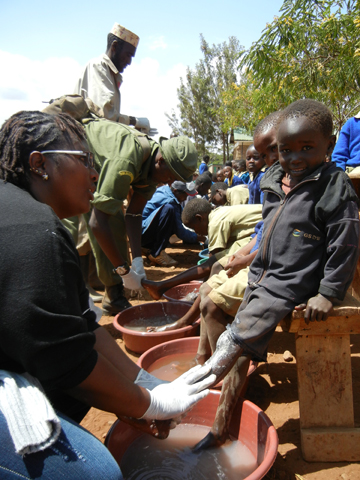 Anti-jigger campaign: jiggers (small parasites that burrow into the exposed skin of people’s feet and hands) are a scourge to children and adults living in tropical and subtropical climates. Because of the warm climate, dusty environment and limited access to hygienic products and shoes, the children in the Lewa Education Programme are particularly susceptible to these painful parasites. As part of a joint effort between the Lewa Education Programme and Lewa’s Health Programme, every three months the Lewa staff comes together to treat the local children affected by the jiggers. Photo courtesy of LWC. |
Mike Watson: The most important factor is to have a highly organized, professional and committed security force. Lewa’s team protects over 60,000 acres, divided into 18 patrol blocks that are monitored 24 hours a day, 365 days a year. We ensure that each rhino on the conservancy is seen by one of our rangers at least every two days. If they aren’t seen after four days, we begin an aerial search of the conservancy that doesn’t end until we’ve found them. On top of our amazing human security force, we also have Kenya’s finest tracker dog team to respond to all incidents and pursue any persons that may have entered the conservancy with the intention of poaching. This team of tracker dogs is also regularly called-in to respond to other incidences around the country.
Part of what makes our security force so exceptional is the understanding that their training is never over; they are constantly updating their operations and skill sets. For example, most recently, each member of the KPR teams received medical training and one person on each team attended an advance field-medical course. The poaching gangs that we are up against are increasingly organized and technologically advanced, as a result we must always adapt and upgrade our operations to match this growing threat.
My advice to other conservancies is that this level of security is difficult to maintain and extremely expensive; however it is the only way to safeguard these animals at this time when wildlife products, particularly rhino horn, are so highly sought-after on the black market.
Mongabay: You’ve run into an abundance problem with the black rhinos. How do you know there are too many rhinos for Lewa?
Mike Watson: Lewa has run into a “high quality problem” as a result of our successful breeding program. Since 2000, Lewa’s black rhino population growth rate has averaged 10 percent, higher than the national target of 6 percent. However, we are beginning to see signs that the Conservancy has reached its ecological carrying capacity of rhinos. Incidences of fighting between the male rhino for females and terrain are increasing, and younger males are attempting to knock down the perimeter fence lines in hopes of finding their own territory.
Mongabay: What are your plans to deal with the overpopulation of rhinos?
Mike Watson: With this success, Lewa now has the unique problem of needing to translocate some of these animals to other conservancies where they will be kept safe, but also be able to establish their own territories and continue to breed and improve population numbers.
Lewa have received approval from KWS for the translocation operation and anticipates moving more than 20 rhinos off of Lewa to maintain the ecological carrying capacity at a manageable level where they can breed and roam freely without fighting for territory. This operation is critical to properly managing the species, but is subject to availability of funding. Ideally, we would like to remove the fence between the Lewa Wildlife Conservancy and our neighbors the Borana Conservancy. However, this will only be done when we can be sure that our Security team, in partnership with Borana, can maintain our high level of security across this greater area.
Mongabay: Your organization also helps manage the black rhino population at Ol Pejeta Conservancy (the largest in East Africa). Are the challenges different here?
Mike Watson: Lewa, acting as it does as a ‘Catalyst for conservation’ was instrumental in brokering a deal which saw Ol Pejeta change from a primarily cattle ranching entity to a highly successful wildlife conservancy in a very short space of time. Challenges are similar and Ol Pejeta now has a sufficiently effective security force to operate without our support, but we remain available to assist if requested.
GREVY’s ZEBRA AND OTHER SPECIES

Grevy’s zebra in LWC. Photo courtesy of LWC.
Mongabay: What other rare species are found at Lewa?
Mike Watson: Due to its wide variety of habitat (mountains, grasslands, swamps and river valleys) Lewa is home to an extremely diverse array of wildlife. Over 440 species of birds migrate through the Conservancy every year, as well as more than 70 different mammals, including the “big five”: lion, leopard, elephant, rhino and buffalo. While Lewa is best known for the protection of the black rhino and Grevy’s zebra, it is also home to some lesser known, but no less impressive endangered mammals, like the sitatunga, the besia oryx, and the gerenuk.
We are also particularly proud of our elephant population. Approximately 240 elephants migrate through the Conservancy every year. Lewa was integral in the creation of an elephant migration corridor that stretches from Samburu, through Lewa and up to Mt. Kenya. The corridor was finalized in 2011 and formed in partnership with several other wildlife conservation organizations, as well as local farming businesses that gave up portions of their land for its creation. The purpose behind this corridor was to reduce human wildlife conflict and includes the world’s first elephant highway underpass. Many experts were skeptical of this program, doubting that elephants would be comfortable with, or even understand, the concept of passing beneath a freeway. But those doubts were put to rest within days of it’s opening when a bull elephant named Tony walked right through. Over the past year the corridor has been a huge success, with hundreds of elephants using the underpass, as they make their way along a historical migration route. The effects have been remarkable for diminishing pressure on habitat areas, reducing human-wildlife conflict and hopefully increasing genetic diversity within Mt Kenya’s elephant population.
Mongabay: Will you tell us about your Grevy’s zebra population?
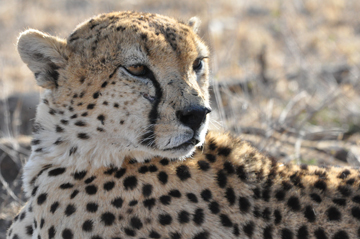 Cheetah at LWC. Photo courtesy of LWC. |
Mike Watson: Lewa is also home to Kenya’s largest single population of Grevy’s zebra. The Grevy’s zebra has suffered one of the most devastating population reductions of any African mammal. Historically found in Eritrea, Ethiopia, Somalia and Kenya, Grevy’s zebras are now restricted to northern Kenya and Ethiopia. While less than 30 years ago they numbered approximately 15,000, as of today approximately 2,000 remain. A report by the Equid Specialist Group declared that “the decline in numbers of the Grevy’s is so serious that extinction within 50 years is probably if the trend continues at the current rate.” Lewa is currently home to 19% of the world’s population of Grevy’s, so we hold a huge amount of responsibility for the species’ survival.
The Grevy’s Zebra is very different, both in appearance and behavior, from their cousins the ubiquitous common or “Burchell’s” zebra. Grevy’s zebra are taller and heavier, with trumpet shaped ears and closer-together stripes. The common Zebra stay together in close family groups. In contrast, the Grevy’s stallions are primarily solitary with the mares and foals living in “nursery herds.” There are several possible reasons why the Grevy’s zebra is so endangered in comparison to the common or Burchell’s zebra. Habitat pressure, drought, civil war, disease and poaching have all played a part in the species downfall. Also, during the 1960s and 70s zebra were hunted for their meat, as well as to feed the demand for their skins, which were popular component of interior design in western countries.
Mongabay: What are the management issues for this species?
Mike Watson: High-tech radio-collars help us monitor zebra in inaccessible areas, allowing us to compare the movement patterns on Lewa with those of northern populations. Today, more than 90% of our Grevy’s zebra have been identified in our photo-identification database, using the unique stripe pattern (or “barcode”) on the right-hand side of the animal’s rump. These techniques provide valuable information such as movement patterns, resource hotspots, reproduction, foal survival and recruitment rates.
We are optimistic about the future of our Grevy’s, but survival rates of foals need to improve by at least 50 percent. Greater protection can be offered in several ways. For example controlled livestock grazing to reduce the grass cover around Grevy’s “nursery sites” to lessen the element of surprise for would-be predators.
Mongabay: Have any Grevy’s zebras been sent to other reserves?
Mike Watson: Lewa has successfully translocated Grevy’s zebra herds to several neighboring conservancies, namely Borana Conservancy, Ol Pejeta Conservancy and Meru National Park. There is still a long way to go before the Grevy’s Zebra species reaches a sustainable level, but starting additional populations at these conservancies is a step in the right direction.
THE FUTURE OF LEWA

The LWC is also home to the white rhino. Photo courtesy of the LWC.
Mongabay: What is the future of Lewa?
Mike Watson: It is Lewa’s mission to serve as a catalyst for conservation. We pioneered the community conservation model in Kenya and have achieved amazing success in wildlife management. Now, the future of Lewa lies in looking beyond our boundaries and serving as the foundation to the community-based conservation development being spearheaded across northern Kenya by our sister organization the Northern Rangelands Trust (NRT). NRT serves as an innovative partnership with communities who have set aside land for wildlife conservation. The creation of NRT has increased the amount of land under integrated conservation management to almost 3 million acres, which has allowed wildlife to resume migration throughout their historic natural range.
Along with our commitment to protecting the wildlife within our borders, we are also dedicated to acting as a strategic partner to both the KWS and NRT, sharing our expertise and logistical assets to support wildlife translocation operations, veterinary interventions, and armed anti-poaching patrols across northern Kenya. As our role as a catalyst for conservation continues to evolve, we have an eye toward utilizing our broad network of contacts worldwide to share developments in conservation best practices and advances with other groups across the globe.
Mongabay: What are the challenges of a private reserve versus a public one?
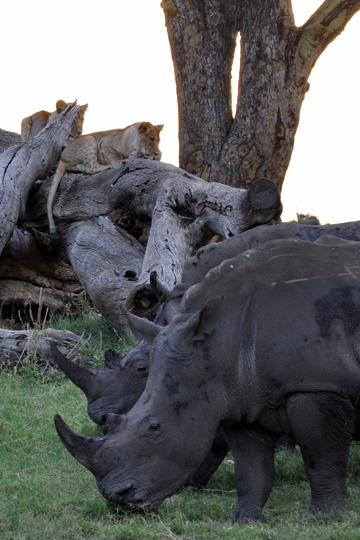 Lion cubs keep their distance from rhinos. Photo courtesy of LWC. |
Mike Watson: There are many advantages to our position as a non-profit organization. We are lucky to have the oversight of a board of directors who bring expertise and insight from within Kenya, and around the world. While we work closely with the Kenyan government, we are able make our own decisions and pursue our own goals with minimal political involvement. However, we are also financially self-reliant and must raise our own funds to operate the conservancy, for which the annual operating budget is in the region of $3 million dollars a year.
Mongabay: How can people help your organization?
Mike Watson: The easiest and most rewarding way to support Lewa is by visiting us. There are five boutique-lodges nestled throughout the Conservancy and conservation fees are paid for every guest. This provides vital income, 100% of which is reinvested back into conservation and community programs.
While tourism revenue accounts for almost 40% of our income, we are also reliant on the support of individuals who believe in community conservation and the preservation of endangered species. I would encourage anyone interested in African wildlife, anti-poaching operations, or community conservation development to check out our website: www.lewa.org. If you would like to support Lewa’s work please go to: http://www.lewa.org/support-lewa/ways-to-give/ to see the many options for giving. Thank you!

The besia oryx. Photo courtesy of the LWC.

Lilac breasted roller in LWC. Photo courtesy of the LWC.

Grevy’s zebra. Photo courtesy of the LWC.

White rhino. Photo courtesy of the LWC.

Young local girl. Photo courtesy of the LWC.

African buffalo in Lewa. Photo courtesy of the LWC.

Women’s micro credit program. Photo courtesy of the LWC.

Elephants in Lewa. Photo courtesy of the LWC.

Lewa Primary School Students. Photo courtesy of the LWC.

African lion in LWC. Photo courtesy of the LWC.
Related articles
A final farewell: the Western Black Rhino goes extinct
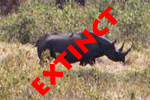
(11/12/2011) The western black rhinoceros (Diceros bicornis longipes) roams the woodlands of Africa no more. The rhino, one of four sub-species of black rhino, was declared extinct this week by the IUCN, five years after the last extensive survey of its habitat in Cameroon. The rhino becomes the second declared extinct this year. All rhinos are threatened by the rhino horn trade.
Wildlife trade bans may be worsening trafficking of some species, argues paper
(09/18/2012) While founded with good intentions, wildlife trade bans may in some cases be worsening the plight of some endangered species, argues a commentary published in the journal Tropical Conservation Science.
Yuppies are killing rhinos, tigers, elephants
(09/07/2012) Yuppies, not elderly rural consumer, are driving the trade that is decimating some of the world’s most iconic endangered species, including tigers, elephants, rhinos, pangolins, and bears, said experts meeting at a workshop in Vietnam.
Camera traps confirm that Sumatran rhinos still roam Leuser rainforest
(08/12/2012) With the help of remote camera traps, wildlife rangers have confirmed that the Sumatran rhino (Dicerorhinus sumatrensis) still inhabits the Leuser ecosystem in northern Sumatra, making the forest the only place on the Earth where Sumatran tigers, orangutans, elephants, and rhinos survive in a single ecosystem, though all remain Critically Endangered.
Kids campaign to save South Africa’s rhinos from poaching
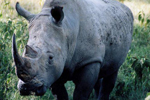
(08/09/2012) The young founders of the U.S. conservation group, One More Generation (OMG), have taken on a new task: halting rhino poaching in South Africa. After a trip last year to visit South Africa, Carter Ries (age 11) and Olivia Ries (age 9), have jump-started a campaign to help convince the South African government to put more resources into halting a rhino poaching plague in the country. Last year an astounding 448 rhinos were killed in South Africa for their horns, averaging more than one rhino a day.
Historic birth for the Sumatran rhino
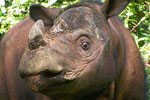
(06/24/2012) After two miscarriages and a pregnancy that lasted 15 months, Ratu, a female Sumatra rhino, has given birth to a healthy male calf, conservationists happily announced this weekend. The birth at a rhino sanctuary in Way Kambas National Park in Sumatra is the culmination of years of hard work, dedication, and the best reproductive rhino science in the world. This is the first captive birth in Indonesia, and only the fourth captive birth for the Sumatran rhino (Dicerorhinus sumatrensis) in the last hundred years. The successful birth brings new hope for one of the world’s rarest mammals: less than 200 Sumatra rhinos are thought to survive in the world.
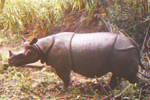
(06/04/2012) Trekking through deep mud and sawgrass we find a stinking wallow. The elite rangers, dressed completely in black despite the tropical heat, mark the site with the GPS unit, measure the mucky puddle’s depth, and move on. This is the first sign of one of the planet’s rarest animals—the Javan rhino. Only 35 or so remain, including none in captivity. This patch of rainforest and swamp in Ujung Kulon National Park—on the very tip of West Java—is their last and only refuge.
Organizations target rhino horn consumption in China
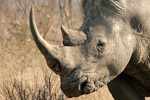
(05/07/2012) Last year nearly 450 rhinos were killed for their horns in South Africa, which has become the epicenter for the global rhino poaching epidemic. Rhinos are dying to feed rising demand for rhino horn in Asia, which is ground up and sold as traditional Chinese medicine, even though scientific studies have shown that rhino horn has no medicinal benefit. Now, two organizations, the African Wildlife Foundation (AWF) and Wildaid have announced a partnership to move beyond anti-poaching efforts and target rhino horn consumption in China.
Kruger National Park loses 95 rhinos to poachers in three months

(04/05/2012) Since the first of the year, South Africa’s Kruger National Park has lost 95 rhinos to poachers, reports the blog Rhino Horn is NOT Medicine. South Africa, and Kruger National Park in particular, continue to be the epicenter for rhino poaching worldwide. South Africa has lost 159 rhinos in total this year with Kruger bearing nearly 60 percent of the fatalities.
Feds bust rhino horn traffickers
(02/23/2012) Federal agents from the U.S. Fish and Wildlife Service (FWS) and U.S. Immigration and Customs Enforcement (ICE) arrested seven people on charges of trafficking endangered rhino horn in the United States, reports the Department of Justice and Department of the Interior. The arrests were made in Los Angeles, Newark, and New York.
Happy rhino news: no rhinos poached in Nepal last year
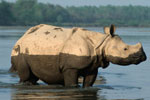
(01/10/2012) As rhinos again fell to poachers in record numbers in 2011, there was one bright-spot: Nepal. Not a single rhino was killed by poachers in the Himalayan nation, home to an estimated 534 greater one-horned rhinos (Rhinoceros unicornis), categorized as Vulnerable by the IUCN Red List. Conservationists celebrated at Chitwan National Park, which holds the vast majority of the country’s rhinos.